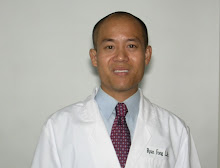Determine Your Goals
Are you looking for a primary health care practitioner, or someone to work with your current physician? Are you seeking short-term treatment for a specific complaint, or do you want the prevention oriented, holistic approach to the health of mind, body, and spirit that acupuncture and Asian medicine can provide? Knowing what you're expectations are – and communicating them to your practitioner –will help you get the most from your treatment.
Select a Practitioner
Ask your friends, relatives, doctor, or your health plan for a referral to a reputable practitioner. You can access a list of professional associations or verify a license through the California Acupuncture Board's Web site at www.acupuncture.ca.gov.
Once you have a list of names, call the practitioners' offices and ask questions. Find out about their training, length of practice, which aspects of acupuncture and Asian medicine they employ, any specializations, and their experience in treating your ailment. You may also want to ask about the cost of treatment.
Diagnosis
An acupuncturist's diagnosis is determined in part by using methods similar to other health care practitioners: Asking patients for a thorough history of their health, diet, exercise patterns, and chief complaints; performing a physical exam, ordering laboratory tests, X-rays or MRIs, and making a referral to a specialist, if necessary. The acupuncturist also uses unique diagnostic techniques, for example, taking the patient's pulse on both wrists and observing the tongue and complexion. The three pulses felt on each wrist are believed to correspond to certain organs and functions. Following the diagnosis, the practitioner should explain to you the nature of your problem, recommend a treatment plan, and give you an anticipated prognosis (outcome).
Treatment Procedures
Modern acupuncture needles are stainless steel, and are between one-half and three inches long, ultra-fine, and quite flexible. They are pre-sterilized, non-toxic, and disposable (single-use). When the needles are tapped into the skin, there may not be any sensation. Much depends on the location (hands and feet tend to be more sensitive), the condition being treated, and the acupuncturist's technique. Needles are typically placed in several acu-points and are usually left in about 20 to 40 minutes. The goal is to normalize the circulation of Qi and blood by stimulating the energy point, which encourages the body's natural healing process. Stimulation can be done by rotating the needles manually or attaching electrodes to send a weak electric current through the needles (electroacupuncture).
The number of treatments needed depends upon the duration, severity, and nature of your health condition. Two or three treatments may be sufficient for an acute condition, while a series of five to 15 treatments may be needed to resolve chronic conditions. Some degenerative conditions may require ongoing treatments over a long period of time.
Other techniques may include moxibustion (burning herbs to heat acu-points), cupping (suction), auricular therapy (ear acupuncture), tui na (Asian massage), and acupressure.
Patients should evaluate their progress after each session. Some relief should be apparent in two or three sessions, or six to eight sessions for more pervasive conditions. If you see encouraging signs, stick with it.
Ask your practitioner questions about your treatment and improvement. If your response to treatment is not satisfactory, the practitioner may consider further diagnostic exams, modify the treatment plan, or refer to an appropriate practitioner, if necessary.
Treatment Precautions
Having an acupuncture treatment if you are very hungry or tired is not recommended. Occasionally, some bruising may occur after treatment. If you have a bleeding disorder or are on blood thinning medications, you should inform your acupuncturist before undergoing treatment. If you are pregnant or have a pacemaker, tell the acupuncturist so that the appropriate herbs and acu-points will be chosen.
Herbal Therapy
In the course of your treatment Chinese herbal remedies may be prescribed. They may be dispensed as raw herbs or in pills, capsules, granules, or tinctures which make them easier to ingest. Most herbal formulas can treat a wide variety of symptoms while stimulating the body's natural healing process.
Acupuncturists are the only licensed health care professionals in California who are required to be trained and tested for competency in prescribing herbal medicine. Chinese herbal medicine has been practiced safely and effectively for centuries and has the greatest potential for beneficial results when prescribed by a trained professional who recognizes both the benefits and risks.
In recent years, herbs have become very popular to self-treat many conditions. They are available in health food stores, supermarkets, and on the Internet. While herbs are promoted as safe, gentle, inexpensive, "natural" alternatives to pharmaceutical drugs, many health care professionals have concerns about safety, effectiveness, and potential misuse of herbal products, especially when self-prescribed. There are also questions of purity, strength, and standardization of herbs.
The California Acupuncture Board strongly recommends consulting an acupuncturist before beginning any herbal therapy. It is also very important to inform both your physician and acupuncturist of all the products you are currently taking (drugs, herbs, other supplements) so they can monitor effectiveness, ensure safety from adverse reactions, and watch for possible interactions. If you have an allergic reaction to any herbs, let you acupuncturist know.
